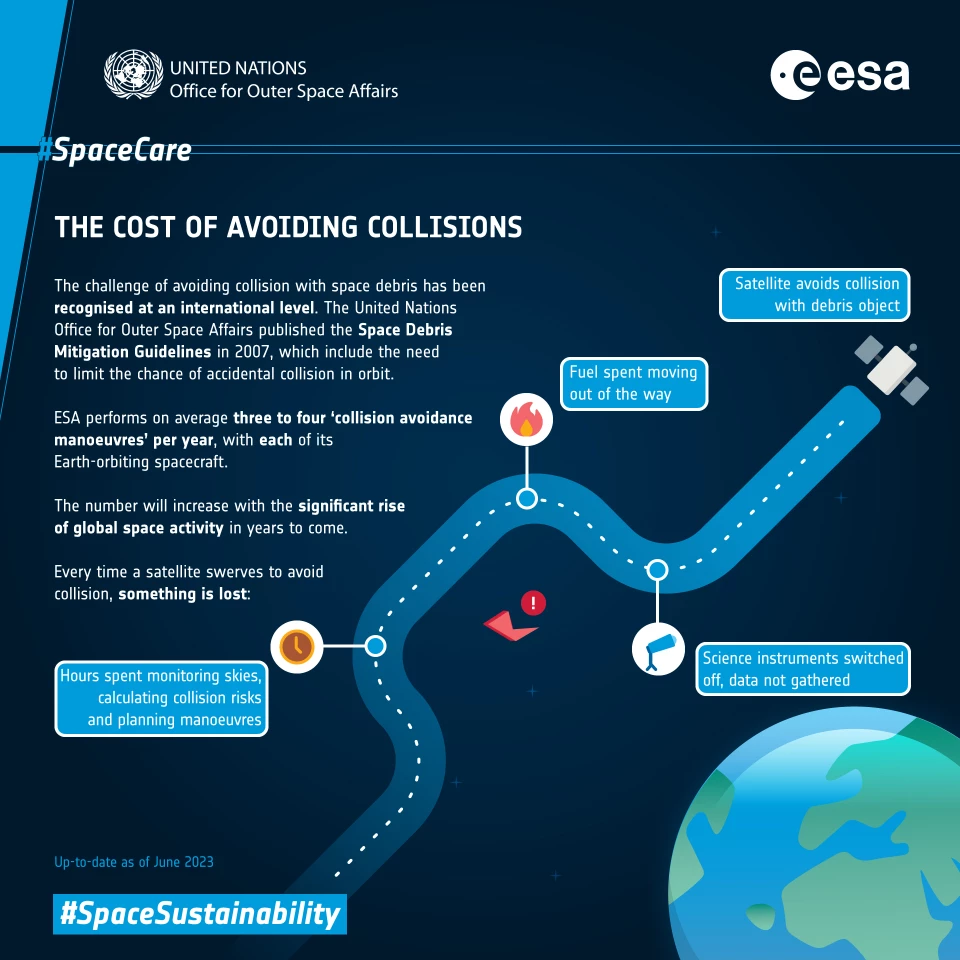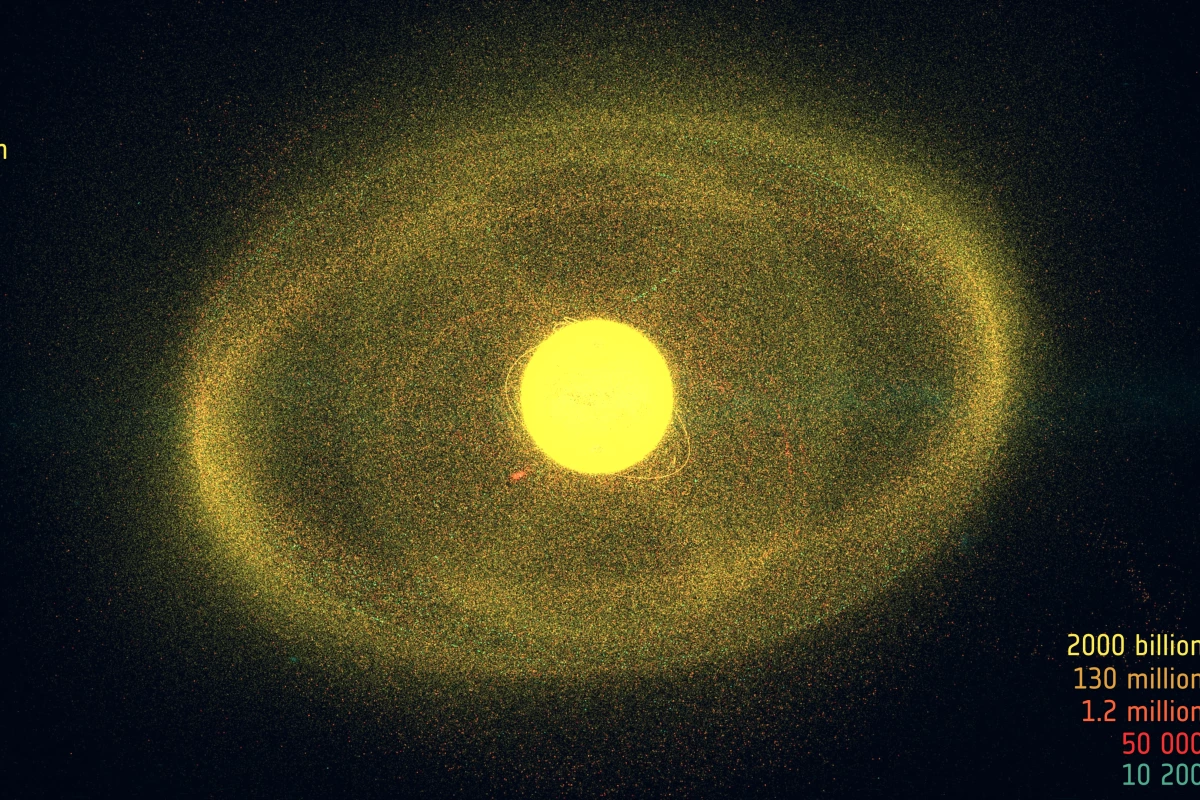ESA is working on a new system with the unfortunate acronym of Collision Risk Estimation and Automated Mitigation (CREAM) that is designed to automate the labor-intensive process of monitoring, assessing, and responding to possible space debris.
The area between the Earth and the Moon, and especially in low-Earth orbit, could do with a serious tidy up. It's estimated that there are over 11,000 active satellites in orbit today, along with 3,300 inactive ones and an eye-watering 1.2 million bits of debris measuring more than a centimeter in diameter. That's not even taking into consideration the tens of thousands of new satellites planned for the future.
With all this traffic, it's become routine for space agencies and major military powers to keep track of which satellites are where and where they're going. If one looks as if it's passing within a kilometer (0.62 miles) of another or there's a one in 10,000 chance of a collision, the standard procedure is to temporarily alter the trajectory of one object for safety.
The problem is that this isn't as simple as it sounds. Aside from determining that a collision might occur, the exact trajectories of each object have to be calculated, their activity and maneuverability status recorded, an avoidance strategy laid out and approved, the objects prepped by shutting down instruments, firing thrusters to change orbit, and then firing them again to get back on the original course.

All that takes a lot of time, money, and manual effort – not to mention calling up everyone with a stake in the incident and getting their okay. ESA alone says that it has to do this up to four times a year with its spacecraft and with the number increasing, so will collision dangers.
Beginning in 2020, the CREAM project automates the tasks of collision risk assessment, maneuver planning, and coordination among different space operators. By using algorithms the system can evaluate potential close approaches, figure out the probability of collision, and predict the parameters of the incident.
Once a possible collision is identified, CREAM automatically computes the best strategy to avoid danger – a job that normally requires a lot of human input. It then communicates and opens negotiations with the space operators, regulators and service providers who have a stake in the spacecraft involved, and can even produce maneuver agreements with little human intervention.
Currently, CREAM is moving from ground-based testing to in-orbit demonstrations that include the system flying piggyback as a digital payload on satellites. The first of these will be in 2027. Called the CREAM-IOD mission, it will use a low-cost satellite that can automatically calculate orbits, assess encounters, and compute avoidance maneuvers.
In addition to its immediate application, ESA hopes that CREAM will facilitate a feedback loop to develop both the technology and the regulations that it will operate under.
Source: ESA






